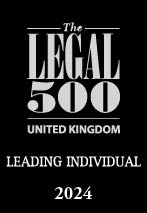Land that has fallen into disuse is increasingly being seen by some policy makers as an opportunity to fuel a ‘green recovery’ or help Scotland meet its targets for climate change and support the drive towards a circular economy.
According to the Scottish Land Commission, there are almost 11,000 hectares of derelict and vacant urban land across the country. This figure will predominantly include urban sites but rural landowners could have land on the fringes of these areas.
Scotland’s Vacant and Derelict Land Taskforce, co-founded by the Scottish Land Commission and Scottish Environment Protection Agency (SEPA), recently published a report on Transforming Scotland’s Approach to Vacant and Derelict Land. It sets out 13 recommendations that it hopes will help to bring such sites back into use.
The report’s primary focus is clearly on urban land and brownfield sites. However, landowners need to be aware that, if pursued politically and enshrined in legislation, the recommendations could also in future be used, in rural or semi-rural areas, to change the field of play in terms of Community Right to Buy (CRTB).
Existing Powers
Communities already have the power to take charge of derelict or unused sites. Legislation through the Community Empowerment (Scotland) Act allows community bodies to apply to buy land – including buildings – which is either wholly or mainly abandoned, neglected or is being used or managed in a way that is harmful to a community’s environmental wellbeing. If an application is successful, the landowner can be made to sell the land to the community body.
However, even where communities have the financial means to make the purchase and the determination and expertise to succeed, the legislation is demanding. Since this element of CRTB came into force in 2018, the number of purchases does not appear to have reached double figures.
The new recommendations
The new report on derelict land is not a response to low CRTB numbers, but it could affect them. For example, the recommendations include:
- Mapping vacant and derelict sites on a national register to make it easier for people to find information, therefore bringing opportunities to the attention of proactive communities.
- Introducing measures making it easier to buy land for reuse, including:
- granting local authorities compulsory sale powers
- potentially removing the ability for a landowner to leave land to see if its value improves
- suggesting new funding models to support communities for developing small derelict sites.
Landowners will be aware of the risk that in remote or inaccessible areas, land which may be perceived by some as “abandoned or derelict” may to the landowner be regarded as having value to them, whether now or in the future. If this is the case, an element of stepping up of their estate management may be prudent – such as looking at possible landscaping or improvements or fencing.
However, landowners could also view the recommendations in terms of opportunity as well as risk. It may be better both financially and reputationally to reach agreed deals with communities rather than waiting for less favourable provisions to be enacted.
Time for a proactive approach?
Scotland’s goals on climate change and economic growth clearly require imagination, innovation and investment. The way that politicians, legislators, communities and businesses think about land use is changing fast. More partnerships between landowners and community bodies are being seen, notably on a voluntary basis, benefiting both parties.
These derelict land recommendations are another sign of changing times and new ways of thinking. Landowners would be well advised to consider whether ‘wait and see’ offers real value against the liabilities that always run with ownership and the way the legal wind might soon blow.
This article appeared in the LandBusiness magazine, the Scottish Land and Estates quarterly publication.







